Reading your birth chart can reveal hidden parts of your personality
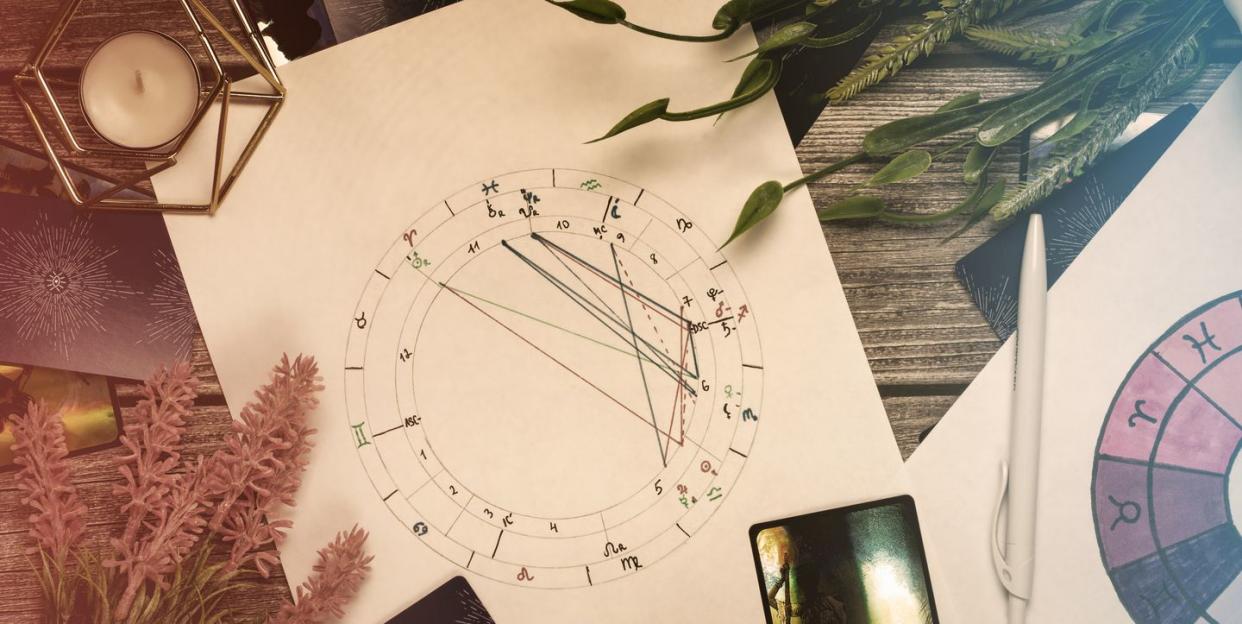
If you’re new to astrology, you might think your Sun sign tells the whole story. But even though that’s typically viewed as your 'main' zodiac sign (and the one you likely use and refer to most often), it doesn’t reveal everything about your personality.
Simply put, the horoscope you read each month represents only a tiny part of your astrological self—it’s basically just one slice of the cosmic pie. That’s because horoscopes are based solely on the position of the Sun at your birth, while your actual birth chart takes into consideration the rest of the celestial bodies present in the solar system (a total of 10!).
Sometimes, a horoscope will truly resonate with you and be incredibly accurate, but if you want to get the full experience of how astrology applies to you, your life path, and future opportunities, you need to read your full birth chart.
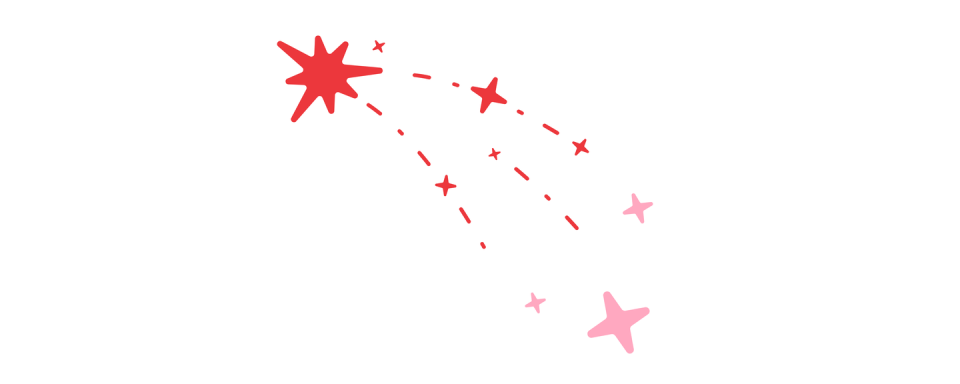
What is a birth chart?
An astrology chart—also called a birth chart or natal chart—is technically a snapshot of the position of the planets on the exact day, time, and location you were born. It contains powerful information about the types of energies you were exposed to at your precise moment of birth. On a personal level, it also speaks of your strengths and weaknesses, opportunities for growth, and the absolute best (and worst) times to make big life changes. Some astrology branches—Evolutionary Astrology, for example—even claim that your astrology birth chart is a window into your past lives and your soul’s entire journey.
The main reason knowing your natal chart is kind of a big deal: It’s unique to Y-O-U. A common misconception about birth charts is that they are like horoscopes, just individualised. Reading your daily, weekly, monthly, and even yearly horoscope can provide general guidance because it’s based solely on your Sun sign. But reading your chart—which is a customised assessment of all the different celestial bodies, astrological houses, natural elements, and more—means receiving targeted and hyper-personalised direction for your life (sounds useful, doesn’t it?).
What’s more: Birth charts apply not only to people, but basically to anything. The chart of a marriage, for example, will be defined by the exact time and place in which both parties signed the marriage certificate.
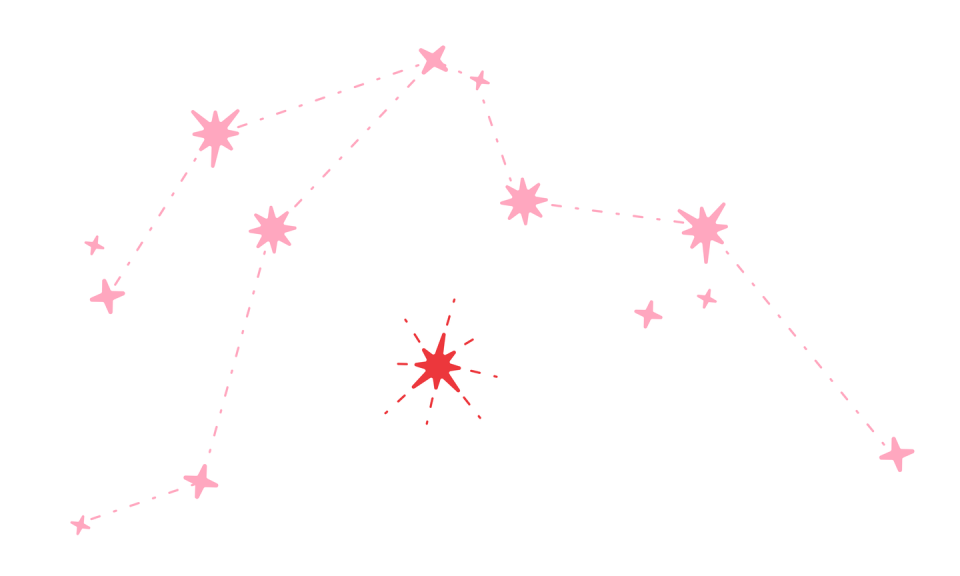
Birth chart calculator
To calculate your birth chart using this free calculator, you will need your exact time, date, and place of birth. FYI: Having the exact time is very important, so if you have access to your birth certificate, your reading would be next-level accurate. But if you don’t know it, just enter 12 p.m.
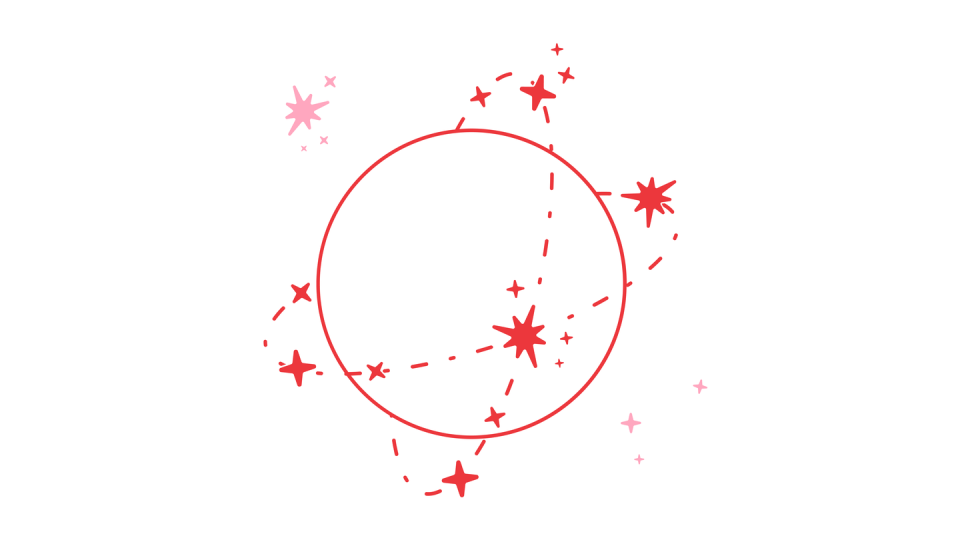
What does each planet represent in your birth chart?
Understanding your birth chart can open a whole new universe within yourself. Each of the 10 main celestial bodies in the solar system is also found in your chart, and each one represents a different part of yourself.

What does each house in your birth chart represent?
When reading birth charts, a key component is knowing what each astrological house means. The astrological houses are strongly defined by the time of birth, so if you don’t have an accurate birth time, you will most likely not be able to read this part of your chart that well.
Every person’s birth chart is divided into 12 houses, flowing counterclockwise in a circle. Each house represents a different part of life, which is highlighted when a planet resides in it. (Worth noting: When an astrological house is empty, meaning no planets reside in it, that does not mean that area of life is lacking.)
Each of the 10 planets has a 'favourite' house to inhabit. When a planet occupies its favourite house in a birth chart, it is said to be 'in its joy,' automatically elevating this planet by helping it work at its best.
Flip over these cards to uncover highlights about each astrological house.
Click the arrow for a more in-depth analysis of each house.

What does your Rising sign in your birth chart represent?
When getting to know yourself through an astrological lens, the first step is to figure out your 'big three'—your Sun, Moon, and Rising signs—which are considered the pillars of your cosmic makeup. Your Rising sign, also called the Ascendant, is calculated with your time of birth, as it is the zodiac sign that was rising on the Eastern Horizon the moment you were born.
Having an accurate Rising sign is absolutely crucial for a few reasons:
Your Rising sign represents your first breath, colouring the way you will interact with the world around you.
Since the Rising sign is where the first house begins, it sets up your birth chart and the 12 houses included in it.
Your Rising sign’s celestial ruler also functions as the 'ruler of your chart.' Its corresponding zodiac sign and astrological house will be very telling of your areas of focus in life.
If you have any planets forming an aspect (conjunct, square, opposition, sextile, or trine) with your Ascendant, they will add another layer of interpretation to your birth chart.
Flip over these cards to uncover highlights about each Rising sign:
Click the arrow for a more in-depth analysis of each Rising sign.
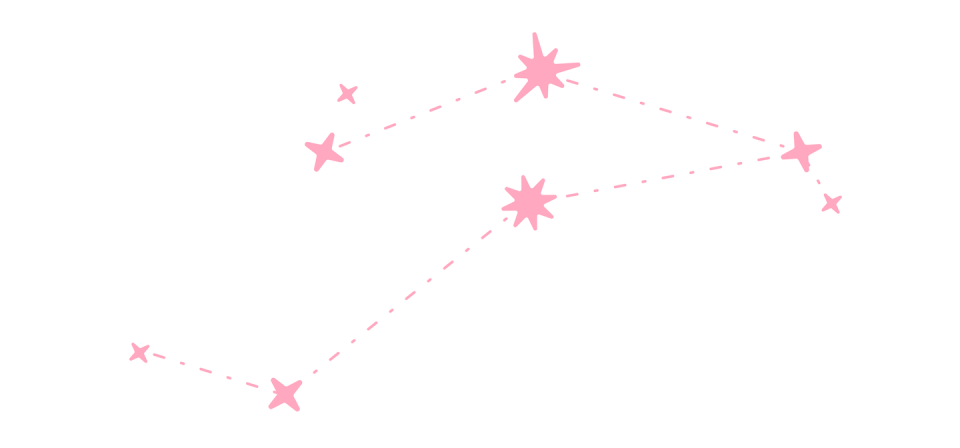
How do the four natural elements factor into your birth chart?
Understanding how astrology works consists of creating awareness of the elements that exist in the natural world. The four elements are fire, earth, air, and water, and each one rules over 3 of the 12 zodiac signs.
A 'well balanced' birth chart has at least three signs in each natural element, but most charts are unbalanced—either because they have fewer than three signs in one element or are missing an element altogether. There’s nothing wrong with having an unbalanced chart, BTW—it simply means you have a lot of one of the other three elements.

What does an astrologer look at when reading a birth chart?
Astrologers use many techniques to figure out how a person uniquely embodies the vibe of their overall birth chart. Though that can get pretty complicated (astrologers are professionals, after all!), here are some of the key elements they consider when analyzing a birth chart:
The big three signs: Sun, Moon, and Rising
The placement of each planet within the 12 zodiac signs and the 12 houses
The pattern or shape formed by the planets
The overall elemental (fire, water, earth, and air) composition of the chart: Is there a balance or imbalance? If an imbalance, how can that be fixed?
The overall quality (cardinal, fixed, and mutable) composition of the chart: Is there a balance or imbalance? If an imbalance, how can that be fixed?
Which are the strongest planets, and which are the weak planets?
Which planets are in harmony with each other, and which are clashing with one another?
Of course, because there are 10 celestial bodies and 12 zodiac signs in astrology, the combinations of energies are endless. That’s why it’s key to figure out which combo is uniquely yours via your birth chart. Once you understand the inner workings of your chart, you don’t have to love what you find—consciously or unconsciously, everyone decides to respond positively or negatively to their individual chart.
How can you determine birth chart compatibility?
Birth chart compatibility—also known as synastry—is the art of comparing two birth charts to understand the dynamics at play between two people, regardless of the nature of their relationship. Unlike Sun sign astrology, which compares only the position of the Sun, it takes into consideration the 10 celestial bodies and many other factors. With romantic synastry, for example, comparing two people’s Sun and Moon signs is always a must. Often, romantic couples will have a positive Sun-Moon connection, which is the ultimate 'good compatibility aspect.' If one partner’s Moon and the other partner’s Sun are in the same sign, for example, that is their most positive compatibility connection.
The 'romance planets' of Venus and Mars are key players too because if two people’s Venus signs are harmonising with one another, there will be a strong pull between them. And if their Mars signs are compatible, let's just say the sexual energy will be gratifying. Synastry also takes into consideration the Lunar Nodes of Destiny, which are the points in the sky where the luminaries (Sun and Moon) cross paths to create eclipses, the Nodes rule destiny, karma, and even past lives.
These are just a few celestial points of comparison, but astrologers also assess the relationship between many other aspects of each person’s birth chart.

What can your birth chart tell you about your future?
Astrology is less a method for concrete fortune-telling and more a language of energy. Its practice is better used when reading the *many possible* effects some celestial influences can have on you in a holistic way.
Using astrology to predict your short-term future is similar to making plans around the weather forecast: Certain days and weeks will look great for making big moves and asserting yourself, while others are better for keeping a low profile.
Predicting your long-term future by reading your natal chart can be an enlightening experience, but your birth chart isn’t static—it learns and evolves with you. Bringing the chart to the present moment helps astrologers see what might end, begin, change, or evolve over the course of the years. While astrology can’t predict exactly what will happen (you still have free will, after all!), it can predict periods of opportunity and big emotional changes, as well as which times of your life will be the most successful or difficult. One thing’s for sure: After getting a solid overall grasp of your birth chart, you’ll never read your horoscope the same way again.

How often should you read your birth chart?
Unlike your credit score, your natal chart can be checked as often as you like. But there are two powerful times to read your birth chart: at the beginning of each year and around your solar return (a.k.a. your birthday).
As you already know, the beginning of the year is an energetic reset. This is when most astrology enthusiasts delineate the big-picture Transits Chart for the year ahead (calculate yours here!). A Transits Chart overlays the current celestial alignments onto the natal chart to figure out how these changes affect it. (Things get more complicated when reading how the current astrological weather is affecting your chart, and for this, astrologers use other kinds of charts.)
Based on the yearly cycle of the sun, Solar Return Charts are important because during the daytime surrounding your birthday, plus or minus one day, your chart gets impregnated by the light of the sun going back to the exact position it was in when you were born.

What are the types of astrology readings you can get?
Besides the Solar Return Chart, astrologers use Synastry Charts, Progressed Charts, Electional Charts, Horary Charts, and many more. Synastry Charts delineate the in-depth compatibility between two people and can be read for romance, business, family, or friendship. Progressed Charts bring the natal chart to the present moment. Lastly, Horary Charts focus more on answering specific questions and predicting the future.
But regardless of the chart you use to start your astrological journey, remember to be patient and open to what it reveals about your personality, compatibility with other people, and more.
More from World Of Woo...
You Might Also Like



